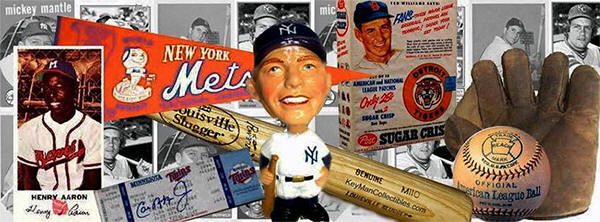|
| 1921 Exhibit Baseball Card |
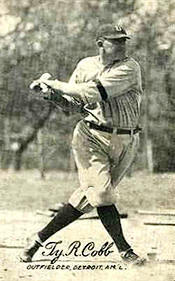 |
|
|
1950 R423 Ty Cobb |
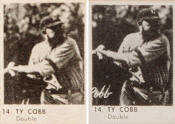 |
|
2019 MMXOX
Gypsy Oak Micro |
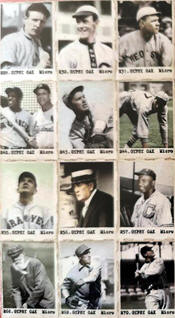 |
|
|
Eppy Player Picture Charms (Doubleheader Charms) |
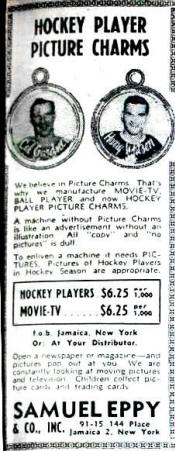 |
|
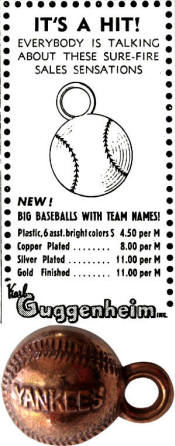 |
|
|
Redlegs Mini Pennant |
 |
|
|
Miniature Telescope Viewers |
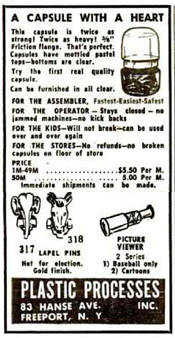 |
|
Penny King Flicker Rings
1960 Advertisement |
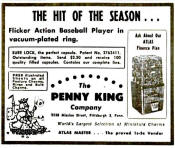 |
|
 |
|
Team Name Flicker Ring |
|
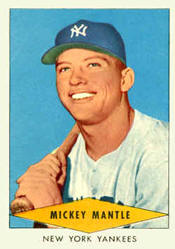 |
|
1954 Mickey Mantle Red Heart Baseball Card |
|
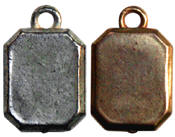 |
|
|
1969 MLBPA Photo Button |
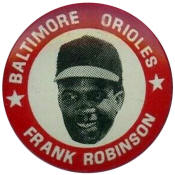 |
|
Frank Robinson |
|
|
Iron-On Baseball Transfers Vending Display Card |
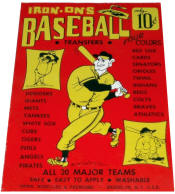 |
|
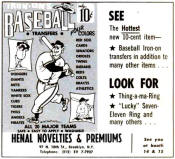 |
|
1967 Billboard Ad |
|
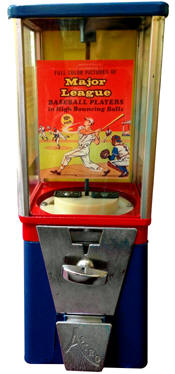 |
|
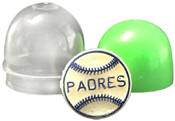 |
|
1969 Baseball Team Rings |
|
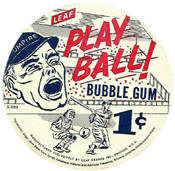 |
|
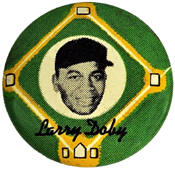 |
|
1956 Yellow Base-Path PM15
Vending Pins |
|
|
|
|
| KeyMan
Collectibles |
NEWSLETTER |
August 2020 |
|
|
Gumball Vending Machine Baseball
Memorabilia |
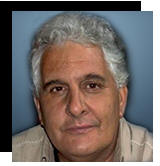 |
|
Steven KeyMan |
|
|
-
By Steven KeyMan |
|
Founder of
Keymancollectibles.com,
and a long time
collector, Steven
KeyMan has more than 30
years of experience in
researching, and
cataloging information
on Baseball
Memorabilia.
Researching his own personal
collection, and helping others find
information on their
collectibles, the
website grew into the
largest online resource
for baseball
memorabilia |
|
|
|
|
|
| |
Ask
Steven: Direct your questions or feedback,
about Baseball Memorabilia to Steven KeyMan
Steve@keymancollectibles.com You can also Send
KeyMan pictures of your personal Memorabilia Display,
and get your own Free
Collectors Showcase Room featured on the website.. |
|
|
|
|
|
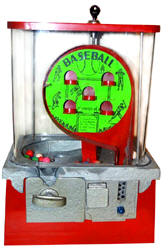 For
generations,
gumball vending machines
provided kids with a major
source for toys, trinkets, and
novelties. If Mom took you
shopping for groceries, chances
are there were gumball
machines stationed between the
cashier and the exit. Drop a
coin in a toy vending machine,
turn the crank for a toy-filled
capsule that provides a brief
but fun moment of surprise and
anticipation.
The first known vending toy capsules were egg-shaped. In 1939, bulk
vending innovator Samuel Eppy
was working for Gum, Inc., when
in an effort to boost gum
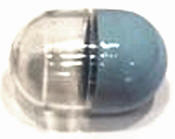 sales, created plastic
charms to be enclosed with each
piece of gum. While Eppy’s idea
was not initially successful
due to packaging problems, his
charm and gum-filled eggs
eventually led to today’s toy
capsule and toy capsule vending
machine industry.
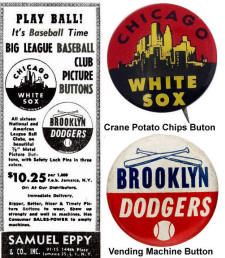
Eppy purchased the toy egg mold
from Gum, Inc. for $4,500. Then
along with his brothers, went
into business for himself, and
introduced the first toy
capsule vending machine. By the
1940's Samuel Eppy & Co. became
the largest manufactures
of vending machine charms.
In 1956 the company produced 7/8 inch Big League Baseball Club Picture
Buttons for their vending
machines. Samuel Eppy might
have also manufactured the
1961-1969 Guy's and Crane
Potato Chips premium Buttons.
The buttons are the same size,
use the same logo designs, and
also features the "Made In
U.S.A." printing along the rim,
instead of a manufacture credit
line.
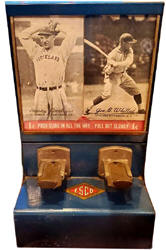 On
July 7, 1921 John F Meyer filed
a patent application for his
Chicago-based Exhibit Supply
Company, to manufacture arcade
vending machines that dispensed
postcard size cards for a
penny. The Company made cards
depicting, cowboys, music,
movie, and sports stars
of the day.
The ESCO- Exhibit Supply
Company vending machines
evolved over the coming years,
and have become highly sought
after by collectors. This
vending machine from the
original 1921 patent was still
in use through the 1930s with
only minor changes.
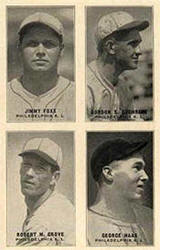 Baseball cards were issued by
the Exhibit Supply Company
Baseball cards were issued by
the Exhibit Supply Company
of Chicago from 1921 through
1963, 1977, and 1980. Exhibit
baseball cards are
difficult to
date because the only way to
distinguish between years is by
very subtle differences.
Most Exhibit cards are blank
backed with very little
identifying text on the front.
Differences in the placement of
text, font style, and wording
such as "Made in U.S.A." or
"Printed in U.S.A." will help
to narrow it down to the year
in which they first appeared.
Given the catalog
designation
R423 these micro
strip baseball cards were
inserted in capsules to be
dispensed in vending machines.
Produced by the Oak Sales Co.
the 5/8" x 7/8" cards were
issued in 13 card perforated
strips in 1950. The thin stock
paper cards features a black &
white player photo, are
numbered 1-120, followed by the
players name, and at the very
bottom a baseball play, used to
play a game; Ball, Strike,
Walk, Strike Out, Fly Out, Foul
Out, Out, Sacrifice Fly, Safe
Bunt, Single, Double, Triple,
Home Run.
|
|
| |
 |
|
| |
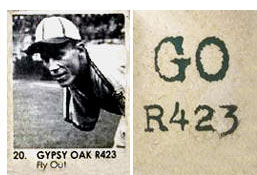 The back of the cards, most printed in
orange, are sometimes found in purple
or green, illustrate a baseball diamond
with tiny figures at six infield
positions. Years later cards with
"Go
R423" on the back were issued by Gypsy
Oak Studios. These 2015 micro cards
were made in the style of the 1950 R423
vending cards but without the payer's
name.
The back of the cards, most printed in
orange, are sometimes found in purple
or green, illustrate a baseball diamond
with tiny figures at six infield
positions. Years later cards with
"Go
R423" on the back were issued by Gypsy
Oak Studios. These 2015 micro cards
were made in the style of the 1950 R423
vending cards but without the payer's
name.
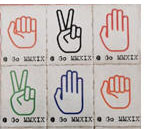 "Gypsy Oak Micro" vending cards were
issued from 2016-2020. The cards with
"© GO MMXVII" on the back can be dated
to 2017. The illustrated portraits
feature both old time, modern, and
current baseball stars. In 2019 (MMXIX)
black & white picture cards were
issued. All of these sets have a
Rock-Paper-Scissors game on the back.
"Gypsy Oak Micro" vending cards were
issued from 2016-2020. The cards with
"© GO MMXVII" on the back can be dated
to 2017. The illustrated portraits
feature both old time, modern, and
current baseball stars. In 2019 (MMXIX)
black & white picture cards were
issued. All of these sets have a
Rock-Paper-Scissors game on the back.
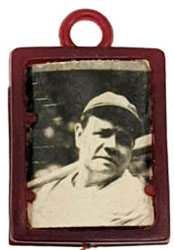 Dispensed in vending machine capsules,
these picture charms featured black-and-white
photos of baseball players inserted
into the back of different color
plastic key chain lockets. The 3/4 inch
by 1-1/4 frames have a loop at the top
for a chain. The lockets are loosely
dated to 1950 based on the players
featured in the set.
Dispensed in vending machine capsules,
these picture charms featured black-and-white
photos of baseball players inserted
into the back of different color
plastic key chain lockets. The 3/4 inch
by 1-1/4 frames have a loop at the top
for a chain. The lockets are loosely
dated to 1950 based on the players
featured in the set.
Penny King also issued key chain
lockets with a different player
checklist featuring pictures printed on
paper and glued to a white, yellow,
green, red, or blue plastic castings,
up until the mid 1950s.
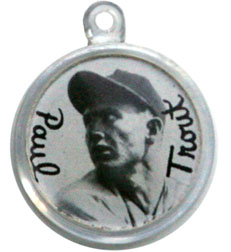 Produced by Samuel Eppy & Co., these
Baseball
Player Doubleheader Picture Charms were issued
in 1952. Eppy also made Movie-TV stars
and in 1953 Hockey Player charms. The 7/8 inch diameter key
chain vending novelties feature black &
white player pictures on both sides.
Produced by Samuel Eppy & Co., these
Baseball
Player Doubleheader Picture Charms were issued
in 1952. Eppy also made Movie-TV stars
and in 1953 Hockey Player charms. The 7/8 inch diameter key
chain vending novelties feature black &
white player pictures on both sides.
The players name appears in script
below or to the side of his portrait. A
clear plastic casing covers
the photo. The complete set consists on
31 unnumbered picture charms
|
|
| |
 |
|
| |
"A natural tie-in with the
baseball season" this
1952 baseball
top, was made by the charm manufacture,
Paul A. Price Co. of NYC. The plastic
tops were made for vending machines,
and were also offered with silver
plating. The Paul A. Price company
manufactured kerosene lamps, plastic
toys, and novelties, and began to
produce charms in 1947. A complete game
of baseball may be played with this
hexagon shaped, 3/4" diameter top. Six
plays are indicated on each side of the
top.
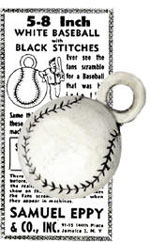 "There have have been baseball charms
before but never like these. Its the
realistic way the black stitches show
on the baseball which makes the fans
scramble for them when the appear in
machines."
"There have have been baseball charms
before but never like these. Its the
realistic way the black stitches show
on the baseball which makes the fans
scramble for them when the appear in
machines."
These white baseballs with black stitches were introduced by Samuel Eppy & Co. in 1953. At the cost of
$6.25 per 1,000 charms, for a penny
each the vendor pocketed a cool $3.75.
The baseball charms were also produced
by Karl Guugenhiem Inc. in 1950 that
featured MLB team names. Copper,
Silver, and gold plated charms were
also produced.
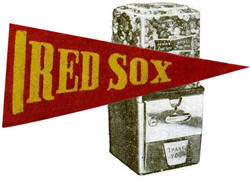 The
vending machine mini pennant
pictured here can be attributed to
1953-1958, the years the Cincinnati
ball club was re-named the Redlegs. The
original team name "Reds" was changed
because of post war communist paranoia.
Sixteen pennants were produced, 8 AL
teams, and 8 NL teams, which featured
the team name to the right of a thick
border.
The
vending machine mini pennant
pictured here can be attributed to
1953-1958, the years the Cincinnati
ball club was re-named the Redlegs. The
original team name "Reds" was changed
because of post war communist paranoia.
Sixteen pennants were produced, 8 AL
teams, and 8 NL teams, which featured
the team name to the right of a thick
border.
 These brightly colored two-tone
plastic miniature telescope viewers,
feature the 1946-1966 Exhibit Supply
Co. baseball cards. The telescope that
measures slightly more than one inch
has a lens at one end, with a white
light gathering screen at the other.
These brightly colored two-tone
plastic miniature telescope viewers,
feature the 1946-1966 Exhibit Supply
Co. baseball cards. The telescope that
measures slightly more than one inch
has a lens at one end, with a white
light gathering screen at the other.
When held towards a bright light you
could view noted baseball players that
include; Mickey Mantle, Warren Spahn,
Ted Kluszewski, Yogi Berra, Eddie
Mathews, and Don Drysdale, Whitey Ford,
Harvey Kuenn, Roy Sievers, Elston
Howard, and Willie Mays, as pictured on
their Exhibit Supply baseball card.
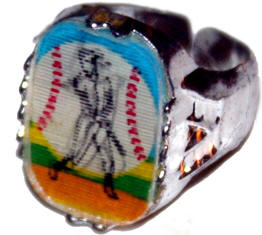 Chances are
your first piece of jewelry came from a vending
machine.
Baseball Themed Flicker Rings
gained popularity in the 1960s.
Lenticular technology was invented and
popularized by the Vari-Vue company
back in the 1930's but the baseball
rings took off in 1960. Pictured here
with a "V" on the side. Chances are
your first piece of jewelry came from a vending
machine.
Baseball Themed Flicker Rings
gained popularity in the 1960s.
Lenticular technology was invented and
popularized by the Vari-Vue company
back in the 1930's but the baseball
rings took off in 1960. Pictured here
with a "V" on the side.
Flicker rings have been legitimately produced by many other companies
besides the Vari Vue Company. Some
imported the ring base from Hong Kong,
and used Vari-Vue lenses. In 1960 the
Penny King company sold Flicker Action
Baseball Player rings that were
vacum-plated.
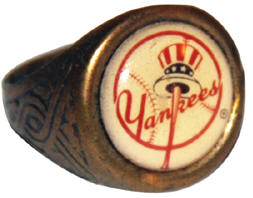 In 1964 Eppy Charms Inc. released
Big
League Baseball Rings just in time for
the opening of the Major League Season.
The gold-plated rings were designed for
capsule vending. The complete series
featured the 20 clubs in the National
and American Leagues.
In 1964 Eppy Charms Inc. released
Big
League Baseball Rings just in time for
the opening of the Major League Season.
The gold-plated rings were designed for
capsule vending. The complete series
featured the 20 clubs in the National
and American Leagues.
The gold plated rings (silver, copper
and bronze) were made using a vacuum
plating process, called "vacuum metalizing"
introduced by Samuel Eppy. The method
was also used on plastic charms. Dating
these rings accurately is very
difficult.
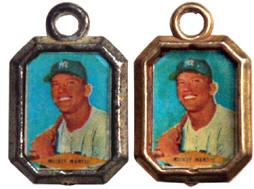 These
Mickey Mantle key chain lockets
would have been placed in vending
capsules to be dispensed in gumball
machines in the 1950s. The molds are
the same used by Samuel Eppy or the
Penny King Co. to produce the baseball
player lockets that were first issued
in 1950.
These
Mickey Mantle key chain lockets
would have been placed in vending
capsules to be dispensed in gumball
machines in the 1950s. The molds are
the same used by Samuel Eppy or the
Penny King Co. to produce the baseball
player lockets that were first issued
in 1950.
Back in the 1950's, vending machine suppliers did not secure licenses for
the images used in the lockets. The
plastic charms were made from common
molds and the supplier would paste images of
choice. These 1950s lockets use an
image of the 1954 Red Heart Mickey
Mantle Baseball card.
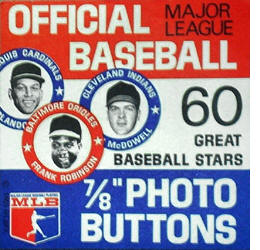 Gumball machine display cards are an
inexpensive collectible and are great
for displaying your vending machine
prizes. Issued by the Major League
Players Association in 1969, these
7/8
inch Baseball Stars Photo Buttons were
dispensed in vending capsules.
Gumball machine display cards are an
inexpensive collectible and are great
for displaying your vending machine
prizes. Issued by the Major League
Players Association in 1969, these
7/8
inch Baseball Stars Photo Buttons were
dispensed in vending capsules.
The set consists of 60 pins, 30 players from the National league in blue,
and 30 players from the American League
in red. The team name is at the top,
with the player's name at the bottom.
In 1983 an unlicensed "1969 MLBPA" pin
set was issued with the team name at the
bottom and Player's name at the top.
The original pins read "1969 MLBPA MFG
R.R. Winona Minn" along the rim. The
replicas omit "Winona Minn" on the
credit line.
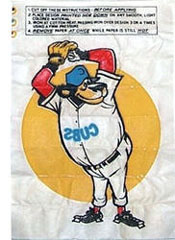 In 1967
Henal Novelties & Premiums
issued Iron-On Baseball Transfers. The
four-color transfers illustrated in
caricature measure 3.25 inches by 5
inches. All 20 Major League teams were
represented. The Colts are listed on
the display card but the caricature on
the transfer is wearing an Astros
jersey riding a colt.
In 1967
Henal Novelties & Premiums
issued Iron-On Baseball Transfers. The
four-color transfers illustrated in
caricature measure 3.25 inches by 5
inches. All 20 Major League teams were
represented. The Colts are listed on
the display card but the caricature on
the transfer is wearing an Astros
jersey riding a colt.
At the top of each transfer are
instructions that are to be cut-off
before applying to a light colored
material. Each transfer was dispensed
in vending machine capsules and for
.10˘ a kid could decorate their
T-Shirt.
The Henal Novelties & Premiums Corp. also introduced the Major League
Players Association Baseball Stars
Photo Buttons (pictured above) at the
1969 NVA-National Vendors Association.
The vending company also distributed
baseball rings, and High-Bouncing
Baseballs, as did many other vending
and novelty companies at the time.
 Major League Baseball Players pictured
in High-Bouncing Balls were
manufactured by the Chemtoy Corporation
in 1970. The high-Bouncing superballs
were sold for .10˘ each from vending
boxes and machines. A full color
picture disc of the player was inserted
inside the clear hard rubber ball. The
back of the disc features the player's
name, team, position and Chemtoy
inventory number.
Major League Baseball Players pictured
in High-Bouncing Balls were
manufactured by the Chemtoy Corporation
in 1970. The high-Bouncing superballs
were sold for .10˘ each from vending
boxes and machines. A full color
picture disc of the player was inserted
inside the clear hard rubber ball. The
back of the disc features the player's
name, team, position and Chemtoy
inventory number.
American League teams in red, National League teams in green. There are 25
inventory numbers for 24 teams because
of the Seattle Pilots 8036 move to
Milwaukee (Brewers 8038) there is an
extra team added to the set.
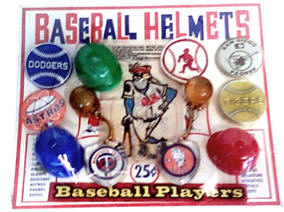 In 1969 the Henal Novelties & Premiums
Corp. introduced a quarter assortment
baseball mix which included;
rings, the
high-bouncing Chemtoy balls,
iron-on decals, cap patches, baseball
helmets, and buttons.
In 1969 the Henal Novelties & Premiums
Corp. introduced a quarter assortment
baseball mix which included;
rings, the
high-bouncing Chemtoy balls,
iron-on decals, cap patches, baseball
helmets, and buttons.
Henal was also working on a new two-inch capsule, starting a trend of
larger prizes. The buttons measured a
large 1.75 inches as compared to the
standard 7/8" pins.
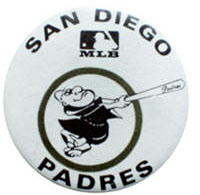 The buttons were also the first to
adorn the new Major League Baseball
logo. In 1969, Major League Baseball,
introduced the official MLB logo which
was to be placed on all licensed
products, and souvenirs, thereafter.
The buttons were also the first to
adorn the new Major League Baseball
logo. In 1969, Major League Baseball,
introduced the official MLB logo which
was to be placed on all licensed
products, and souvenirs, thereafter.
The 1969 expansion team the San Diego
Padres was part of the set of 24 teams
as shown on the vending machine card
above.
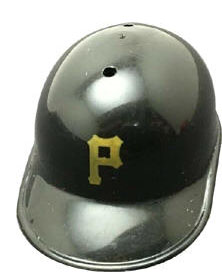 The Baseball helmets became very
a popular item and all the charm and novelty
companies were producing them. Karl Guugenhiem Inc. introduced their
baseball helmets in 1970, after the
success of their football helmets.
By 1973 Laich Industries took a
stronghold on the market.
The Baseball helmets became very
a popular item and all the charm and novelty
companies were producing them. Karl Guugenhiem Inc. introduced their
baseball helmets in 1970, after the
success of their football helmets.
By 1973 Laich Industries took a
stronghold on the market.
Sports Products Corp. was a sub group of the larger Laich Industries which
made plastic housewares and a line of
sports novelty items, including
souvenir baseball helmets.
Founded in 1965 Laich
produced the baseball helmets until
they filed for bankruptcy in
2005. |
|
| |
|
|
| |
KEYMAN COLLECTIBLES
RELATED RESOURCES |
|
| |
|
|
| |
KeyMan
Collectibles Collectors Corner
- Keep up with the latest collecting news,
announcements, and articles of interest on the
webs best resource for baseball memorabilia. |
|
| |
KeyMan Collectibles Baseball
Memorabilia Facebook Group -
Post Questions and comments relating to
Baseball Collectibles and Memorabilia. Interact
with other collectors or show off your
collection. |
|
| |
KeyMan
Collectibles Forum
- A great option for those that "Don't do
facebook" Post Questions and
comments relating to Baseball Collectibles and
Memorabilia |
|
|
|
|
|

